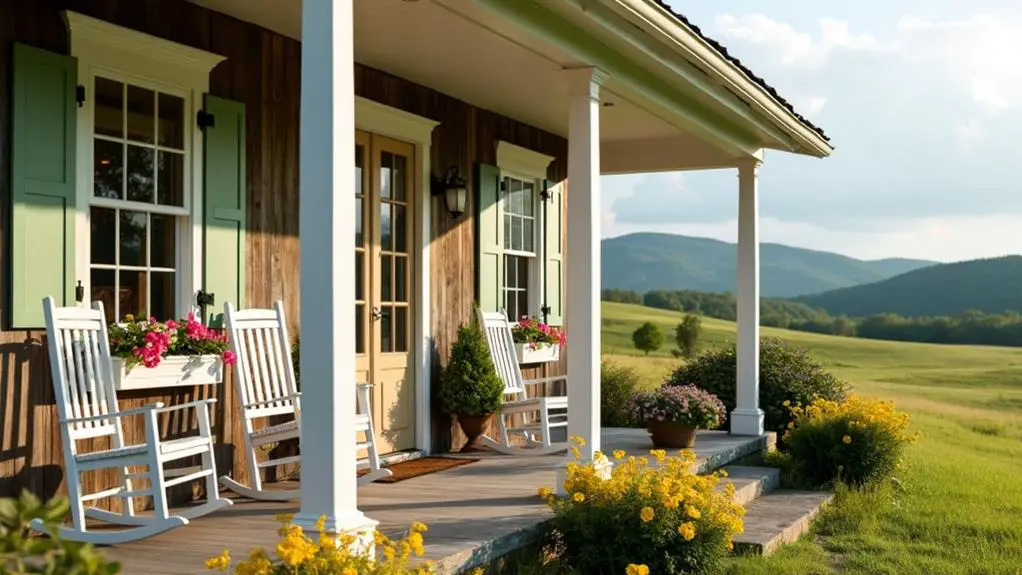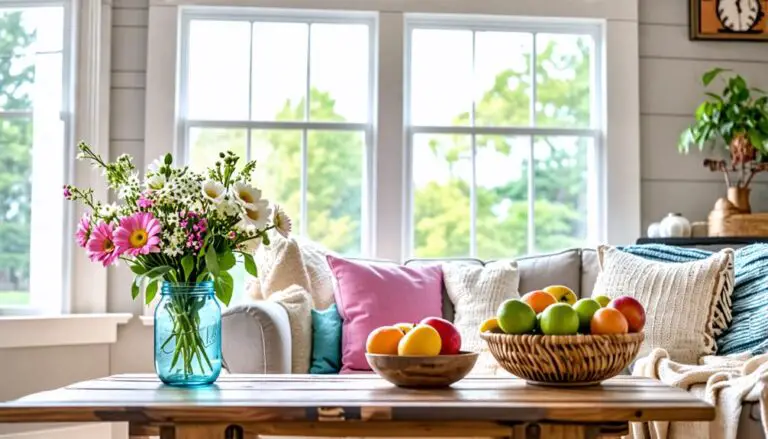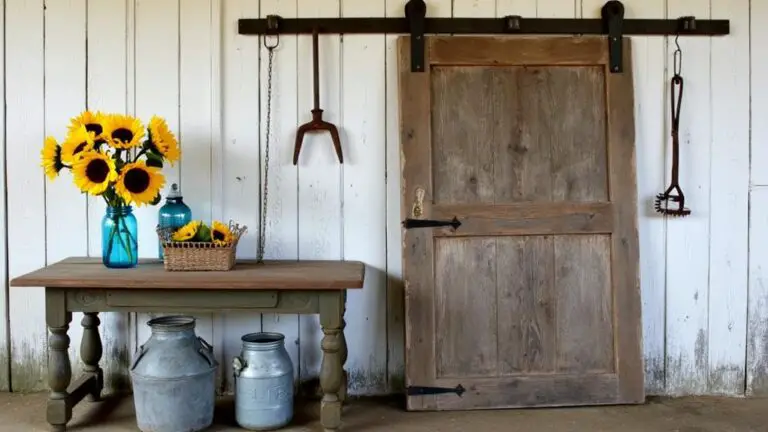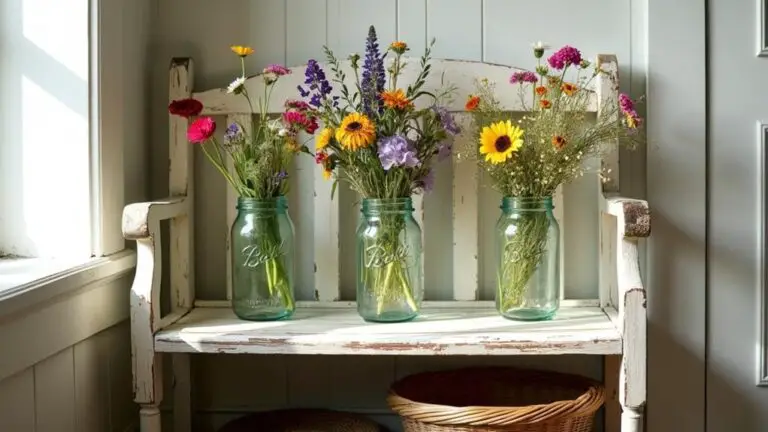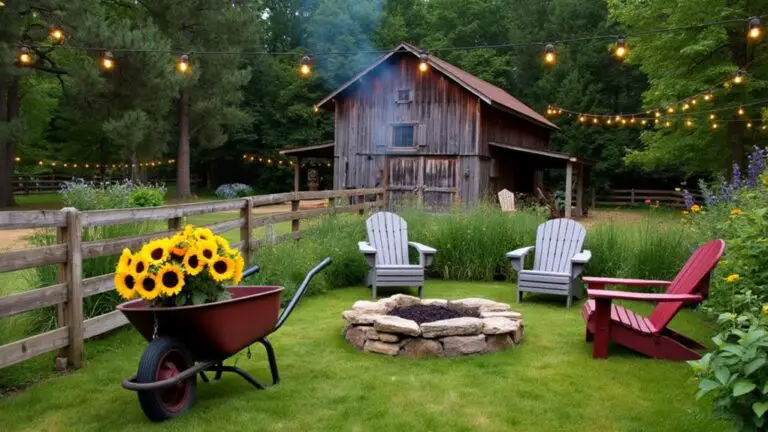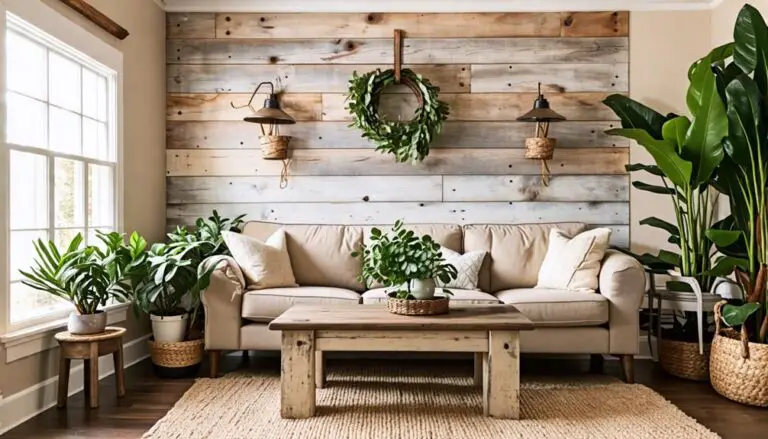Farmhouse Paint Colors: Creating a Warm and Inviting Home
When it comes to farmhouse paint colors, I've found that creating a warm and inviting home starts with a versatile palette. Classic whites and creams form the perfect backdrop, while cozy earth tones add depth and connection to nature. I love incorporating neutral shades like soft whites, warm creams, and greiges to establish a harmonious base. For a touch of personality, bold accent colors can breathe new life into the space. Don't forget about the exterior – the right paint choices can enhance curb appeal and architectural character. By blending these color strategies, you'll be well on your way to achieving that timeless farmhouse charm. There's so much more to explore in farmhouse color design.
What To Know
- Classic whites and creams provide versatile backdrops for farmhouse interiors, adapting to various rooms and decor styles.
- Neutral color palettes, including soft whites and warm creams, create harmonious and inviting farmhouse spaces.
- Cozy earth tones like warm browns and muted greens promote relaxation and connect interiors to nature.
- Bold accent colors can breathe new life into farmhouse design when paired with neutral backdrops.
- Exterior paint choices, such as classic whites or earthy greens, enhance curb appeal and architectural character.
Classic Whites and Creams
When considering farmhouse paint colors, classic whites and creams are an essential starting point.
I've found that soft whites like White Dove and Decorators White create a perfect backdrop for farmhouse decor. These shades can be layered with creamy accents to achieve a warm and inviting atmosphere.
I love using cream colors such as Vanilla Ice Cream and Cream Puff to complement natural wood tones and bold accent pieces.
What's great about these classic whites and creams is their versatility. They work well in various rooms, adapting to different decor styles while maintaining a cozy farmhouse feel.
I've noticed that the undertones in cream colors can range from yellow to blue, allowing me to either warm up or cool down a space.
Neutral Farmhouse Color Palette
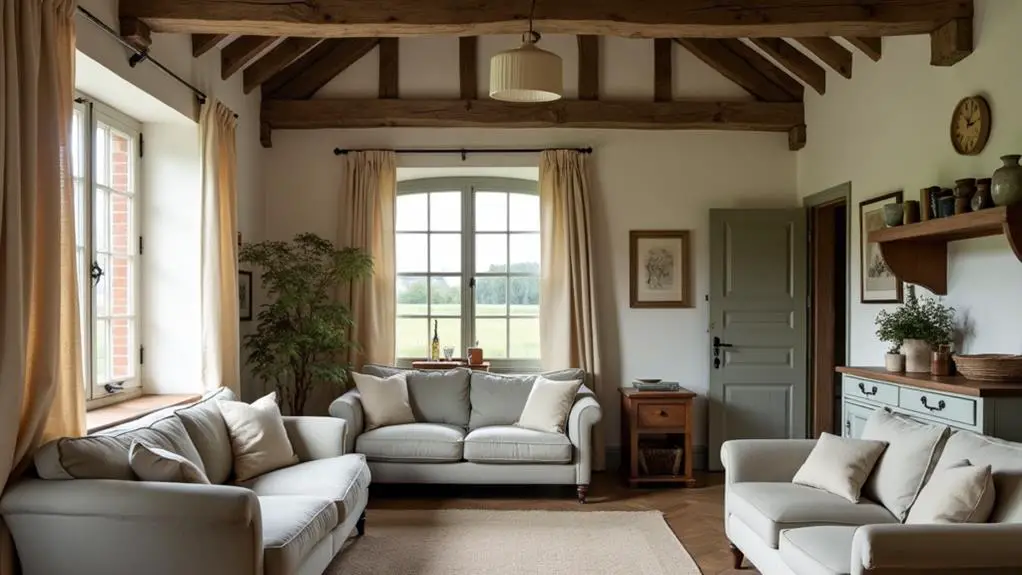
Why are neutral colors so essential in farmhouse design? They provide a versatile backdrop that allows for easy integration of various decor styles while promoting a calm and inviting atmosphere.
When creating a neutral farmhouse color palette, I often turn to soft whites, warm creams, and greiges. Popular choices like Benjamin Moore's White Dove and Sherwin-Williams' Agreeable Gray are perfect for achieving this look.
I love incorporating natural wood tones alongside these neutral hues to enhance warmth and coziness. By layering different shades of neutrals, I can add depth and texture to spaces, making them feel more inviting.
When selecting colors, I always consider their light reflective values, as they greatly impact how light interacts with the paint and influence the room's overall mood. This careful balance of neutrals creates a harmonious and welcoming farmhouse interior.
Cozy Earth Tones
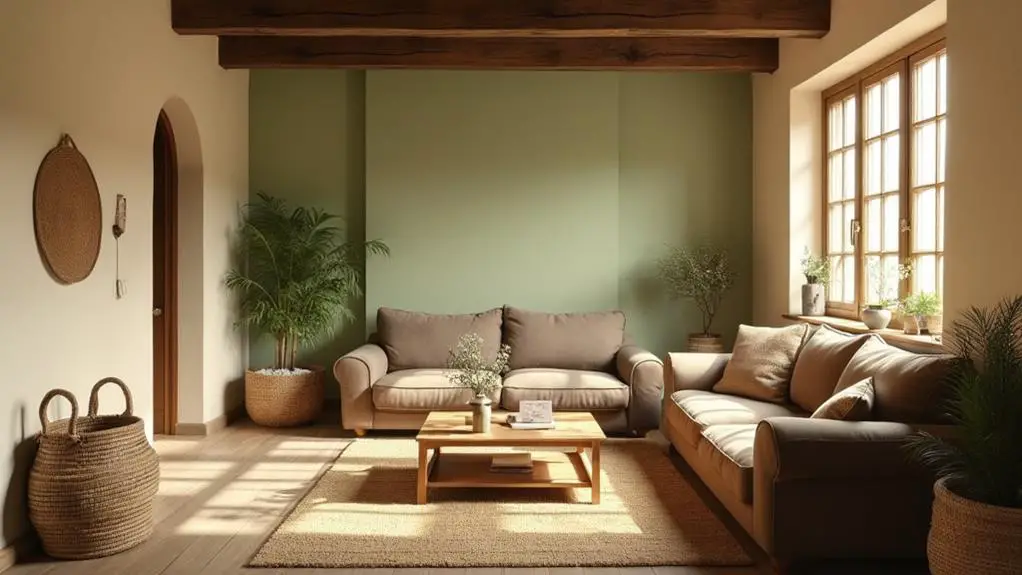
Many farmhouse enthusiasts are turning to cozy earth tones to create warm, inviting spaces that feel connected to nature.
I've found that warm browns, muted greens, and soft beiges are perfect for establishing a welcoming atmosphere that promotes relaxation and comfort.
Colors like Cocoa Brown and Barn Red add rustic charm, making them ideal for accent walls in kitchens or living areas.
I love using earthy greens, such as Sage Green, to evoke tranquility in bedrooms and living spaces.
To enhance the richness of these earth tones, I incorporate natural materials like reclaimed wood and soft textiles.
This combination deepens the warmth and creates a more lived-in feel.
Bold Accent Colors
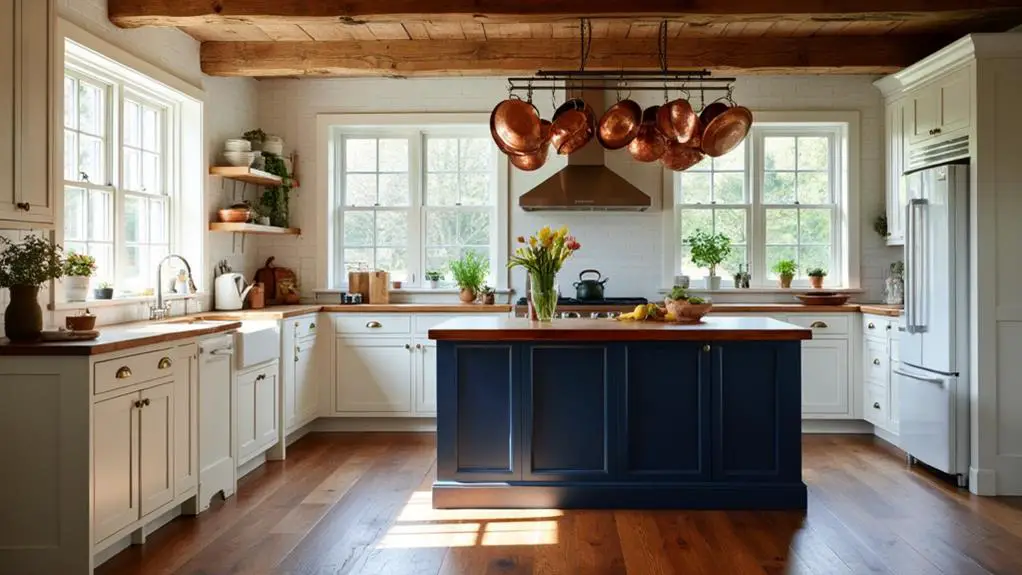
While cozy earth tones form the foundation of farmhouse design, bold accent colors can breathe new life into these spaces. I've found that strategically using vibrant hues like Forest Green or Caliente creates energizing focal points. When incorporating these bold colors, I always pair them with neutral backdrops to maintain balance. Here's a quick guide to using accent colors in farmhouse spaces:
| Element | Bold Color | Neutral Backdrop |
|---|---|---|
| Kitchen Cabinets | Forest Green | White |
| Accent Wall | Caliente | Soft Gray |
| Furniture | Navy Blue | Beige |
| Decor | Mustard Yellow | Natural Wood |
I love how black accents, such as window trim, provide contrast and ground the overall design. When experimenting with bold paint colors, I start small by testing them in doorways or on accent walls. This approach allows me to gauge their impact before committing to larger applications.
Exterior Farmhouse Paint Choices
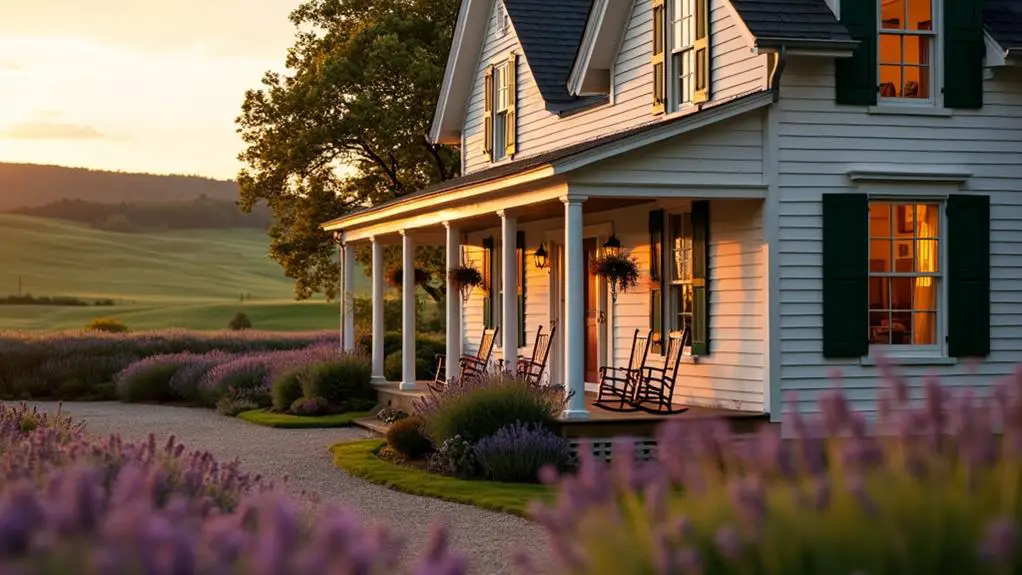
When selecting exterior farmhouse paint colors, I've found that the right choices can dramatically enhance a home's curb appeal and architectural character. I often recommend classic whites like Alabaster or Polar Bear for a timeless look that complements natural surroundings.
For those seeking a more rustic charm, earthy greens such as Sage Green or Lichen blend beautifully with landscaping.
To create a striking exterior, I suggest:
- Using bold colors like Barn Red or Cocoa Brown for accents
- Implementing two-tone color schemes for siding and trim
- Choosing weather-resistant paint finishes for longevity
- Incorporating traditional farmhouse aesthetics through color choices
These options allow me to craft an exterior that captures the essence of farmhouse style while ensuring durability against environmental elements.
Conclusion
I've explored deep into the delightful world of farmhouse paint colors, and I'm thrilled to share these timeless tips. Whether you're wowed by whites, neutral about neutrals, or enthusiastic for earthy tones, there's a perfect palette for your pastoral paradise. Don't forget to add a dash of daring with bold accents, both inside and out. With these color choices, you'll create a cozy, charming, and characterful home that'll welcome you warmly every time you return.

